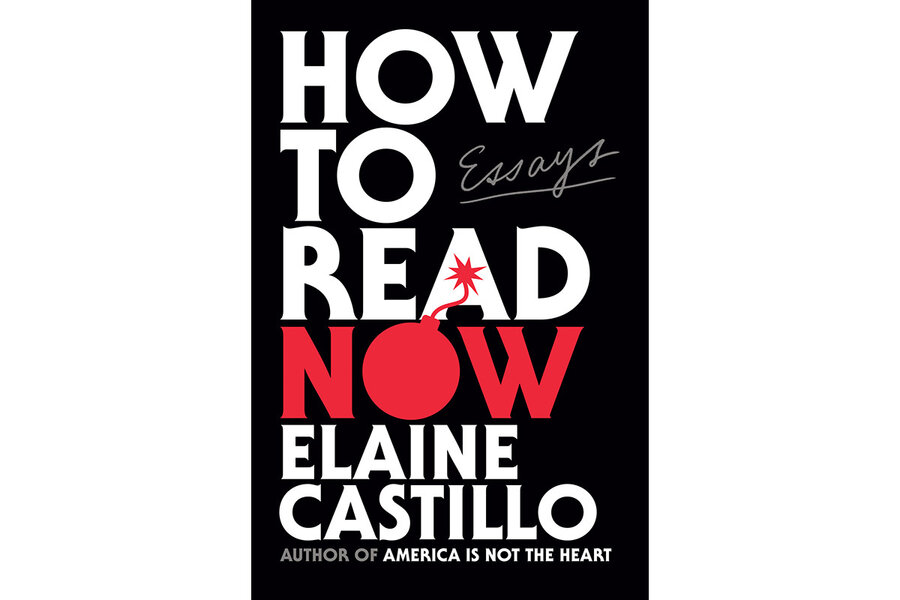Bracing cultural criticism flows from the pen of Elaine Castillo
Loading...
Boundless erudition and eloquent exasperation define Elaine Castillo’s debut nonfiction, “How to Read Now,” an incandescent collection of essays that provokes and discomfits, but ultimately engages, edifies, and thoroughly entertains. “Of course, How to Read Now runs off the tongue a little easier than How to Dismantle Your Entire Critical Apparatus,” she writes, but that’s exactly what can make people better, stronger, smarter readers.
Castillo’s 2018 debut novel, “America Is Not the Heart” – both a nod and challenge to Carlos Bulosan’s classic, “America Is in the Heart” – was critically lauded, nominated for significant awards, best-of listed, and earned her the designation of being one of Financial Times’ “30 of the planet’s most exciting young people.” The shrewd insights she wove into her fiction – about identity, inequity, immigration, politics – rise brilliantly to the surface here, shining with piercing truth, bolstered with significant research (20 annotated pages of works cited), and tempered with surprising humor.
Castillo, whose father was a security guard and her mother a nurse originally from the Philippines, was raised in Milpitas, California, in the 1980s and ‘90s – then a town of mostly Filipino, Vietnamese, and Mexican working-class immigrant families. Castillo credits her father with making her “an inveterate reader all [her] life.” By middle school, she was reading Plato’s “Symposium,” “a fact that none of my white teachers believed, and in fact actively and aggressively tried to disprove – another lesson familiar to many kids of color I know.” With her father as guide, she continued to defy expectations “to read across borders, and to read in translation.”
To be an “unexpected reader,” she insists, “has turned out to be the most valuable gift of my intellectual life.” The unexpected reader, she explains, “is someone who was not remotely imagined – maybe not even imaginable – by the creator of that artwork or anyone in its scope.” By being that unexpected reader, Castillo can point out the careless violence, misogyny, and racism in controversial Nobel Prize-winning writer Peter Handke’s novel “Across.” She can recognize beloved Jane Austen characters as “entwined with Britain’s empire and slave economy.” She critiques the author of the bestselling novel “American Dirt” as “a white woman monetizing border trauma to hawk at predominantly white suburban readers.”
Each of her essays has indelible lessons to explore and absorb. The titular “How to Read Now” begins with “White supremacy makes for terrible readers,” confronting the detrimental effects of assumptions that center the experiences and viewpoints of white people. Reading, she also reminds us, doesn’t happen only on the page: “I’m talking about how to read our world now. How to read films, TV shows, our history, each other. How to dismantle the forms of interpretation we’ve inherited; how those ways of interpreting are everywhere and unseen.”
In “Reading Teaches Empathy, and Other Fictions” – arguably the strongest among an already essential collection – Castillo challenges the well-intentioned platitude “that reading more and more diversely will somehow build the muscles in us that will help us see other people as human.” Her reaction is blunt: such a superficial attitude diminishes writers of color into “little more than ethnographers,” the reading experience akin to “a quick zoo visit.” “The result is that we largely end up going to writers of color to learn the specific – and go to white writers to feel the universal.”
This is not a collection of essays to race through; instead, it should be read thoughtfully and with an open mind to encourage fresh understanding. Castillo refers to Toni Morrison’s “Playing in the Dark,” published in 1992, as the “urtext on the insidious racial backbone of our reading culture” and yet she was alarmed to learn how few people had read it when she referenced the work on her book tour. Three decades later, pairing “Playing in the Dark” with “How to Read Now” seems a foolproof means to becoming better readers.
Terry Hong writes the Book Dragon blog for the Smithsonian Asian Pacific American Center.







